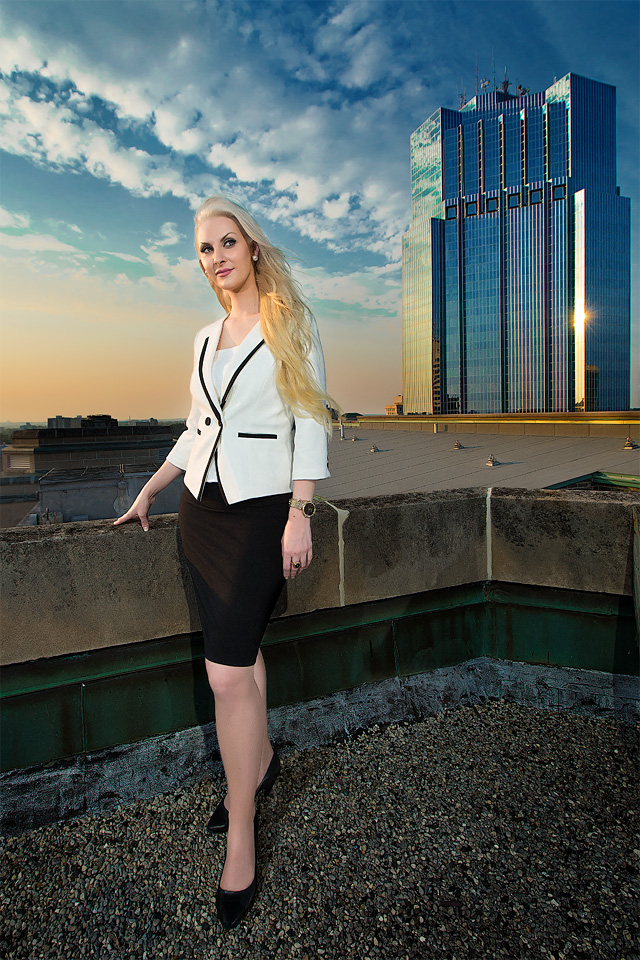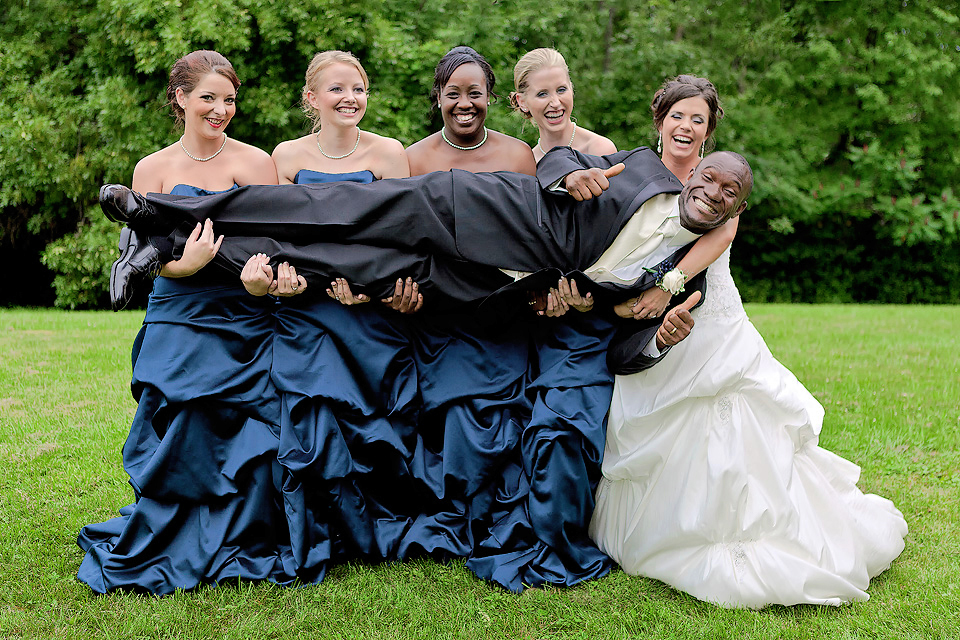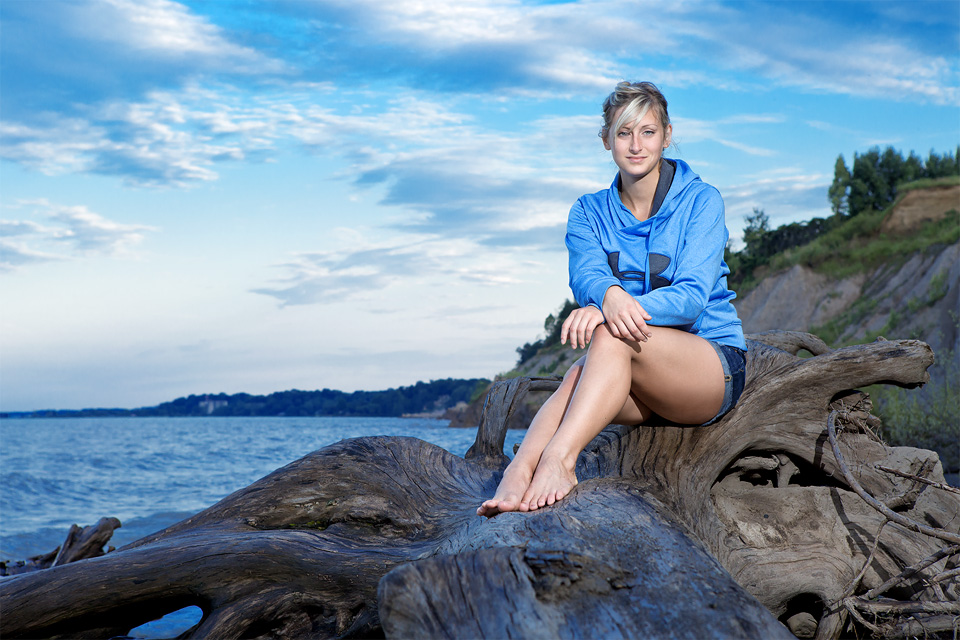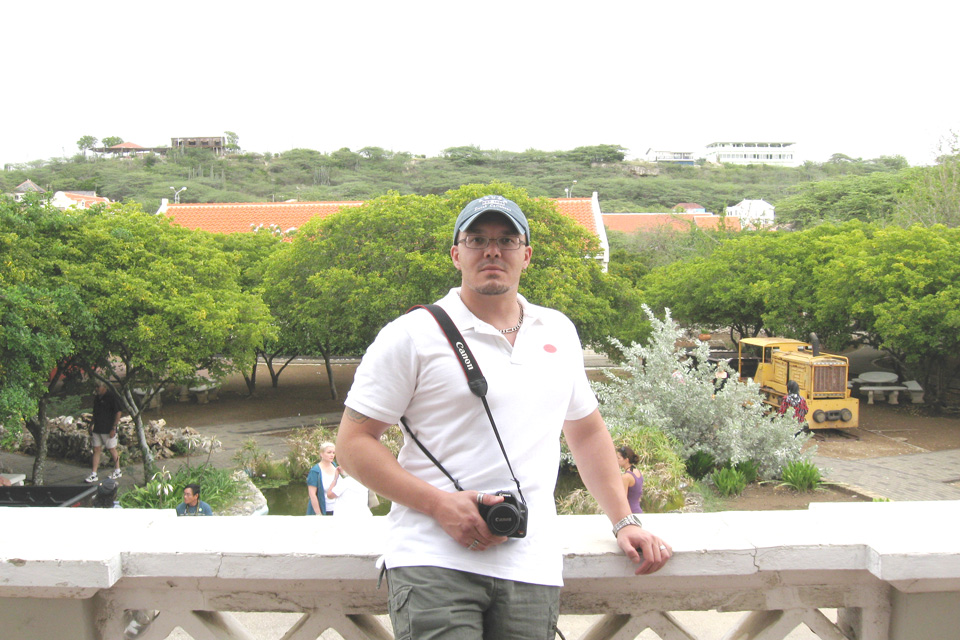If, as I’m completely guilty of doing, you spend some time each day looking around online, you undoubtedly see dozens, if not hundreds, of images. While most photographers I know see the lighting in an image first, most people see the subject. After all, the subject of a photo is the main attraction, right? So long as the person, building or object in the shot is properly exposed, the light must be right.
Which is exactly what I used to think, too, until I started taking light seriously.
Flipping through some of my wife’s and my old vacation pictures the other day, I noticed some things that wouldn’t have dawned on me back then. The image here is a prime example: while I’m reasonably well exposed, my white shirt, the railing and the sky behind me are completely ‘blown out’ with no real detail in them. “Who cares?”, you ask, “the person is the important part”.
In some ways, I’d agree with you. As a portrait photographer, though, I have another perspective. If the background details don’t matter, if blue skies can be lost to pure white and windows are interchangeable with colourless voids, then why wouldn’t I capture my subjects in a studio? After all, a simple roll of seamless paper is much easier to work with than an entire panorama. There are no details in a plain background so there’s little need to worry about anything but the person I’m photographing.

The reason that capturing the background details faithfully and properly exposed is important, if I’m choosing to photograph a person or persons in a particular environment? Odds are there’s a purpose to it. They may be a CEO in front of their office window that overlooks their company headquarters or a conservationist in the middle of the wetlands that they work so hard to protect. Imagine if the CEO’s window was just a mess of white light – the building outside with the company logo on it lost and the context of the image lost with it. The conservationist would be standing among some reeds below a pure white sky, devoid of detail, the kind of sky that no one has ever seen because it doesn’t actually exist naturally.
This, then, is the reason that recording those background details becomes important. Simply aiming a camera at a subject and hoping to properly expose both them and what’s behind or around them is, for lack of a better term, a fool’s errand. This is especially true when applied to the product that a person being paid to capture an image often creates … unless they’re working with the right light. Of course, they could be choosing to not do so for deliberate artistic effect but, if overdone, quickly sounds more like a justification for not learning the tools of the trade.
Because image sensors have a much more limited range than our eyes do, accurately recreating what we see requires helping the camera to “see more and see properly”. As all we (or our cameras) are ever seeing is the light reflecting off of objects, adding light is a practical solution. In the environment, the background details are typically lit by the light sources on-hand: the sun, street lamps, fire, etc.. Once an exposure has been set for those details, the subject often needs a boost in light to also be recorded with sufficient detail, tone and exposure that is appropriate to the scene.
This isn’t to say that one always needs to drag around a portable studio that would take a team of assistants to manage, nor does it mean blasting the subject with high intensity light like it’s some kind of photonic slapstick pie-in-the-face routine. Subtlety is a wonderful thing and a little goes a long way. As in both of the examples above, a simple speed light, gelled to match the ambient light in the scene (speed lights register cool, or blue, compared to the sun, which is warm), allows the camera to see a much more balanced and faithful depiction of what my own eyes witnessed in person.

Balancing the exposures of both subject and background is (even) more important for the wedding photographer. What is it that the bride, THE star of the day, spends so much money, time and attention on? Her dress! All the intricate details, the delicate textures – often lost when trying to expose the bride with only the light at hand (flip through your friends’ wedding images on social media some time – I guarantee you’ll see some examples of this). What a heartbreaking moment when her magnificent gown is immortalised as a wedding-dress-shaped-marshmallow-fluff-blob, when all it would have taken is the right light and the knowledge to use it.
Without light, there’s nothing to see. Without the right light, the results really aren’t worth seeing. It’s all about using the right tools for the job. For photographers, that tool is …
Light.
Cheers!




Very well said Jay
Thanks, John – means a lot coming from you. I meant every word. 🙂
Very true Jay. I see too many photographers using a particular light just because a “guru” says it’s the best light and not necessarily the right light for the job. Sad to say the basic understanding & lighting skills are lacking with many.
Quick fixes and “easy systems” are tempting, but nothing replaces knowledge, experience and practice. If more photographers put the time in learning what works, what doesn’t and how to trouble shoot lighting scenarios, the overall quality of the photography being produced would improve. It’s one of the reasons I’m glad to see so many people making use of resources like The Light Side. Cheers!
Pingback: The Right Light For The Job - photographingGOD Photography